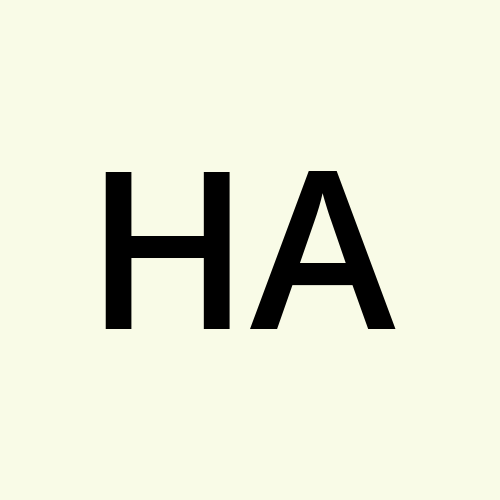Mastering the Art of Flutter UI: A Step-by-Step Guide
 Haroon Ashraf
Haroon Ashraf
A single codebase may be used to create aesthetically appealing applications for mobile, web, and desktop using Google's open-source Flutter UI software development kit. Its quick ascent in popularity is credited to its capacity to create enthralling user interfaces (UI) that significantly improve the user experience. Let's now explore the methods for designing a stunning Flutter UI.
How to Design an Amazing Flutter UI
Creating an eye-catching Flutter UI involves a blend of technical knowledge, an understanding of design principles, and creativity.
Power of Widgets
Widgets are at the heart of Flutter's UI. Not only can they define structural elements (like buttons or menus), but they can also dictate stylistic elements (like fonts or color schemes). Utilize Flutter's extensive widget library and customize them according to your needs. Remember, widgets in Flutter can be reused, saving you development time and ensuring consistency across your app.
Compose Widgets for Complex UI
While basic widgets provide the foundational elements of your UI, Flutter allows you to combine these widgets to create more complex and customized UI components. Experiment with different widget combinations to design unique UI components that elevate your app's appearance and functionality.
Prioritize User Experience
The true purpose of an amazing UI is to facilitate an equally amazing user experience (UX). The best UIs are intuitive, responsive, and enjoyable for the user. Use visual cues and feedback to inform users of the results of their actions. For instance, you can use the SnackBar widget to display brief messages at the bottom of the screen.
Prioritize Responsiveness
Flutter enables you to create UIs that look beautiful across various screen sizes and orientations. Ensure your design is responsive, using MediaQuery and LayoutBuilder widgets to adapt to changes in screen size, ensuring a seamless experience for users across devices.
Test Your UI
Regular testing is vital for achieving an impeccable Flutter UI. Consider unit tests for individual widgets and widget testing to ensure that your widgets interact as expected.
Flutter UI Templates
Flutter UI templates are pre-made designs created by developers or designers for flutter developers who want to save time and effort when designing a user interface. These templates are highly customizable, which means you can modify and adjust them according to your app's requirements.
Think of these templates as blueprints, holding your hand and guiding you through the intriguing world of Flutter UI design.
Following are the common templates Flutter offers for UI developers:
E-commerce templates
Social media templates
Fitness App templates
Music Player App templates
Food delivery app templates
Is Flutter Good for UI Design?
Yes, Flutter is indeed an excellent choice for UI design. Here's why:
Widget-Centric: Flutter's entire UI model is based on widgets, which are reusable and customizable components.
Hot Reload: The hot reload feature in Flutter allows developers to see the effect of changes almost instantly without losing the current application state, which significantly boosts productivity when designing the UI.
Great Performance: Flutter's UI rendering is remarkably fast because it uses the Skia Graphics Library to render directly to the device's canvas, and it compiles to native code, which ensures fast startup and performance.
Responsive Layout: Flutter makes it easy to create a UI that automatically adjusts to different screen sizes, which is essential for modern app development.
Cross-platform Development: With Flutter, you can write the UI code once and run it on multiple platforms, including Android, iOS, Web, and Desktop, while maintaining the native look, feel, and speed.
What is Pixel Perfect UI in Flutter?
Pixel perfect" in UI design refers to the meticulous process of perfecting a design at the pixel level.
This term is often used in the context of taking a design from a UI design tool like Sketch, Figma, or Adobe XD and translating it into code in a way that it looks identical to the original design.
Being pixel perfect means there is a perfect match between the design and the final product - all the elements will appear crisp, well-aligned, and harmonious.
How to Make Sure Your Flutter UI Is Pixel Perfect?
Designing the perfect User Interface (UI) is a balancing act that involves meeting user needs while maintaining aesthetic appeal and functionality. Here are the characteristics that define a perfect UI:
Clarity: The UI should be clear and easy to navigate
Consistency: A consistent UI design helps users understand and learn the flow of your application more easily.
Speed: Users value quick and efficient interactions, so a perfect UI will be fast and responsive
Feedback: Your UI should provide feedback to users to let them know the app has responded to their actions.
Accessibility: A perfect UI should be usable by everyone
Intutivness: A well-designed UI will be intuitive, with common actions and gestures that users can easily learn
Subscribe to my newsletter
Read articles from Haroon Ashraf directly inside your inbox. Subscribe to the newsletter, and don't miss out.
Written by
